How to Pamper Your Lutino Cockatiel: Essential Care Guide
Discover some tips on how you can pamper your lutino cockatiel and provide them with the best possible care to stay happy and healthy!

Cockatiels are one of the most cherished pet birds in the aviculture world, and the lutino cockatiel, with its stunning white plumage and contrasting features, is a particularly gorgeous variant. If you're the proud owner of a lutino tiel, you'll want to ensure that your feathered friend is not just healthy but also happy and pampered. This article will guide you through the essentials of pampering your lutino cockatiel, ensuring that your bird feels loved and cherished every day.
Key Takeaways:
- Understand the unique needs of your lutino cockatiel to provide the best care.
- Learn how to create a stimulating environment with appropriate bird toys and activities.
- Discover the importance of a balanced diet and regular health check-ups for your lutino tiel.
Recognizing Your Lutino Cockatiel Mutation
The lutino mutation in cockatiels is a second cockatiel mutation that results in a bird with a light yellow or off white body, long tails, and a yellow crest. One of their most distinctive features is their stunning orange cheek patches, which stand out against their light-colored feathers. The lutino cockatiel mutation is one of the most popular and historically significant color mutations in cockatiels. Cockatiel mutations, including the lutino mutation, arise from genetic factors and contribute to the diverse appearances of these birds. In contrast, the albino cockatiel, which results from a double mutation (lutino-whiteface), is characterized by its stark white appearance and red eyes. Male lutino cockatiels may have a brighter yellow coloring and can be distinguished by their behavior and vocalizations.
Lutino Cockatiels have an average wingspan of 30-35 cm, which allows them to fly gracefully despite their smaller size.
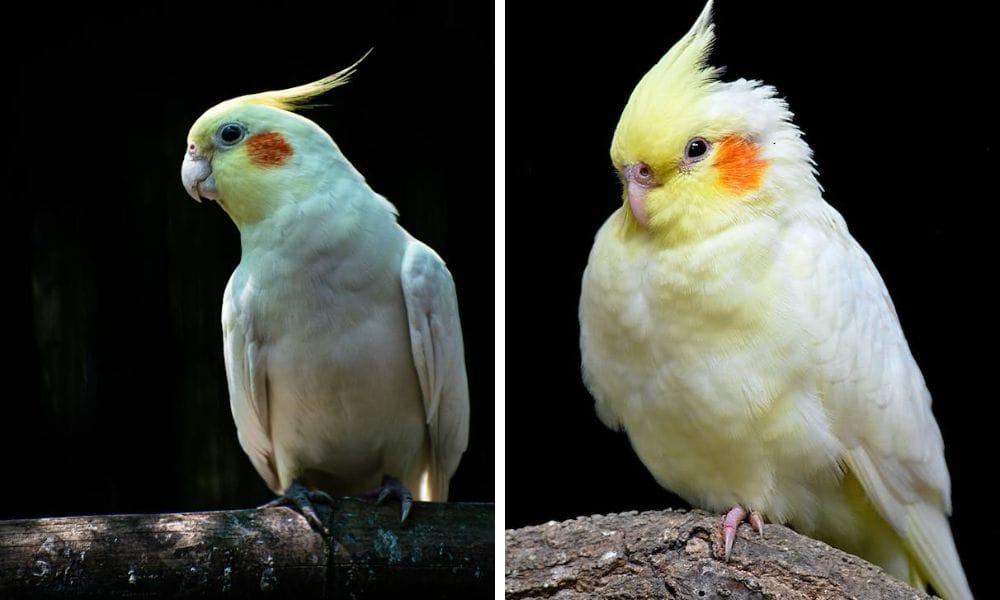
The Ideal Home for Your Lutino Tiel with Stunning Orange Cheek Patches
Cage size is crucial for these lovely birds. A spacious aviary or a large cage that allows your lutino cockatiel to fly and stretch its wings is essential. The cage should be equipped with perches of varying sizes to help maintain healthy feet and beaks. Ensure that the cage is placed in a safe, warm area away from drafts and direct sunlight.
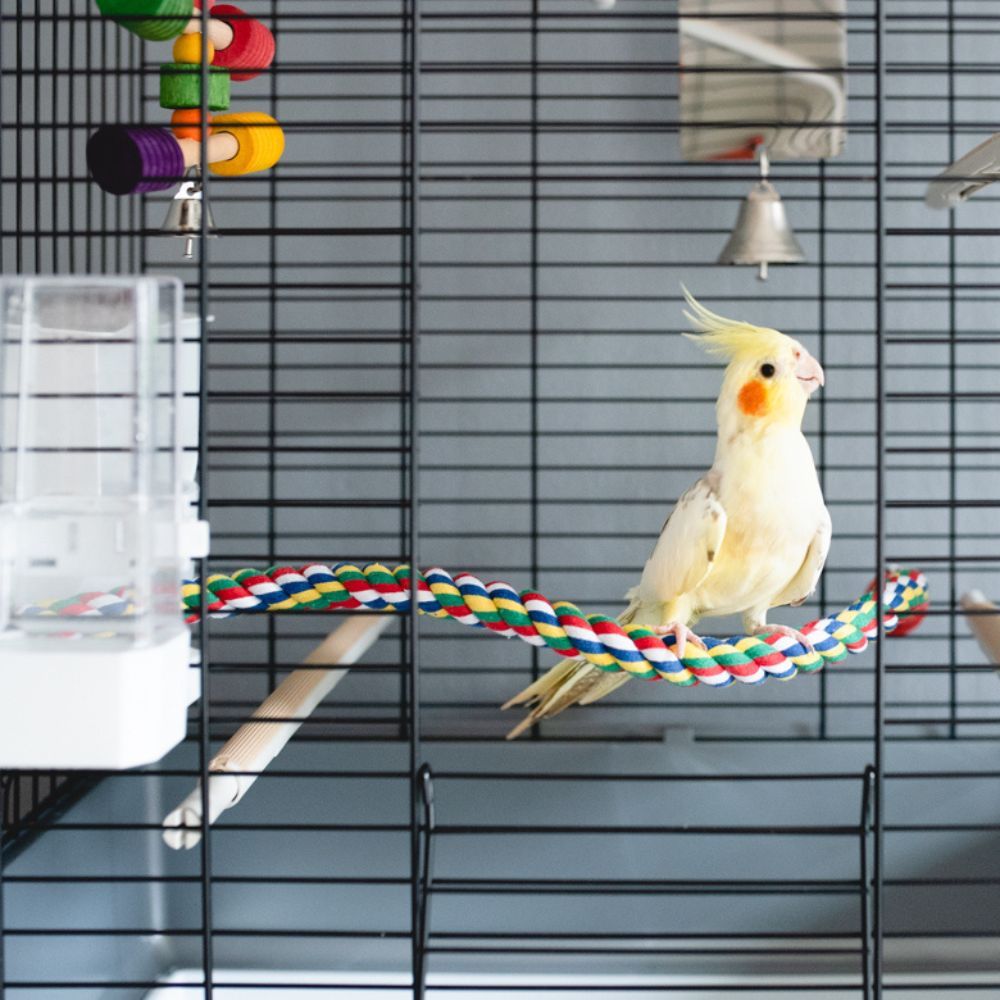
Diet: More Than Just Seeds
While seeds are a staple in the diet of many pet birds, your lutino cockatiel requires a variety of foods to prevent vitamin deficiencies. A balanced diet includes high-quality pellets, fresh fruits, and vegetables. Occasional treats like cooked eggs can provide additional nutrients. Always provide fresh water and avoid foods that are toxic to birds, such as avocado and chocolate.
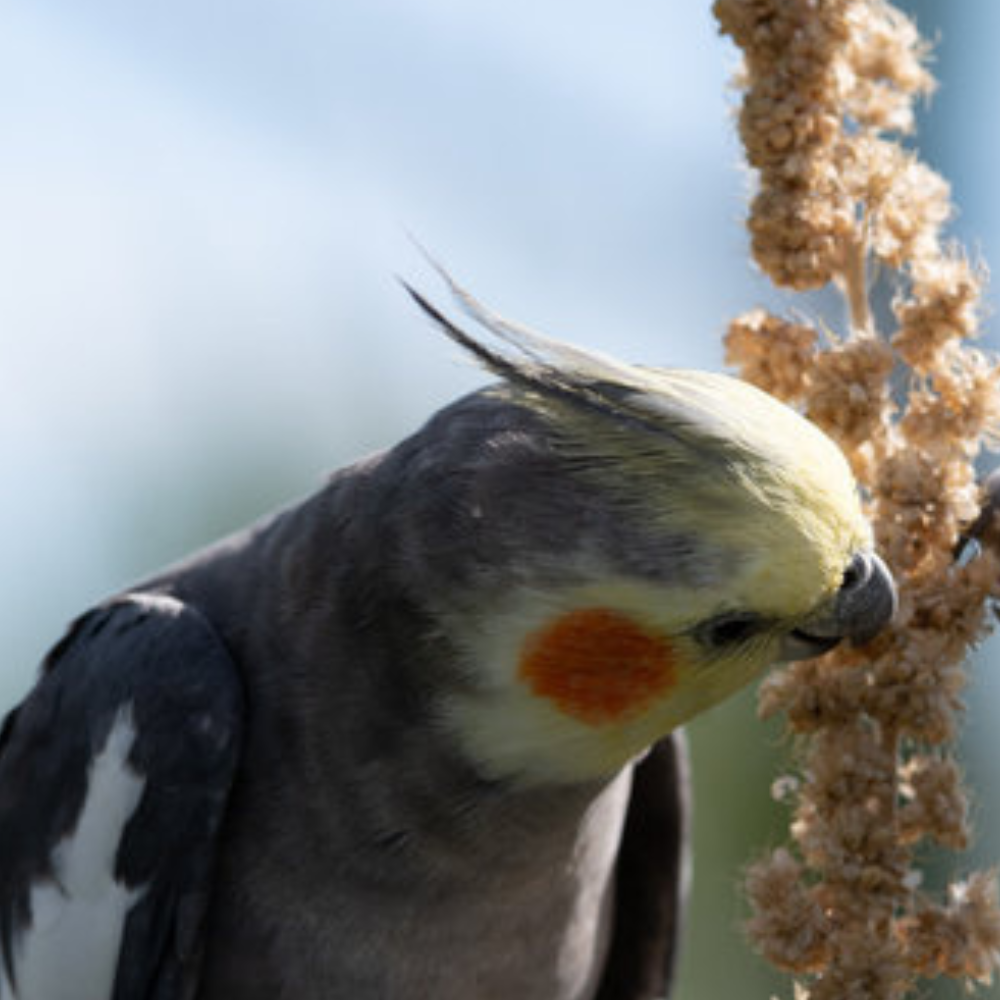
The Joy of Companionship
Lutino cockatiels, like other birds in the parrot family, thrive on social interaction. If you're considering a second bird, introducing another cockatiel can provide companionship, especially if you're away for long periods. However, proper introductions are necessary to ensure they get along. Spend time daily interacting with your lutino cockatiel to strengthen your bond.
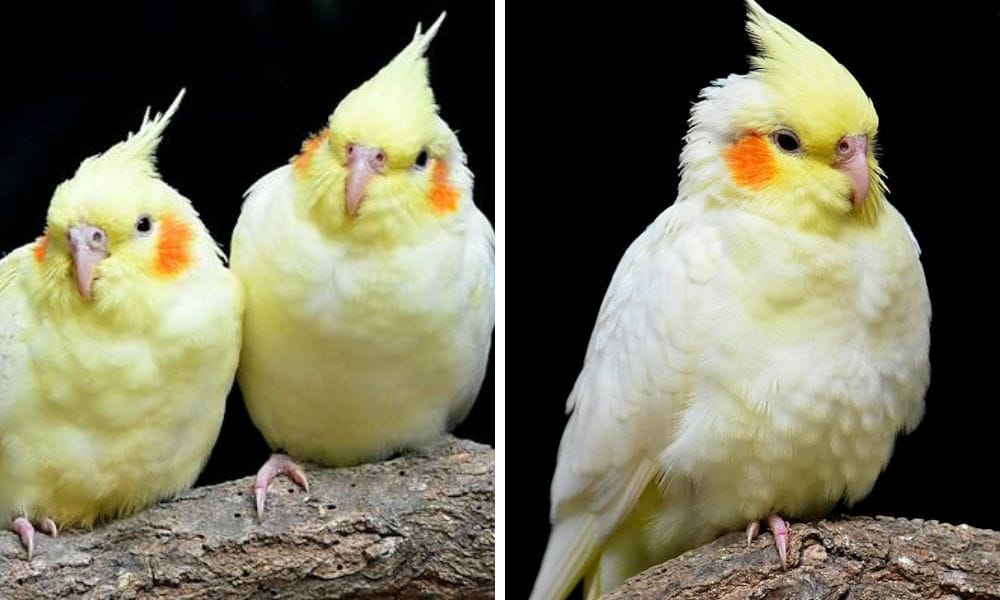
Playtime and Entertainment
Bird toys are essential for a happy cockatiel. Offer a variety of toys, including plastic and rubber toys, to keep your bird engaged. Toys that encourage foraging and problem-solving can provide mental stimulation. Rotate the toys regularly to keep your lutino tiel interested and excited about playtime.

Health and Wellness Checks
Regular check-ups with an avian vet are vital to catch any signs of illness early. Lutino cockatiels can be prone to certain health issues, such as bald patches or fatty liver disease. Monitoring your bird's behavior and appearance can help you spot any changes that may indicate a health problem.
Discovering the Moonbeam Cockatiel: A Rare Delight
Have you ever heard of the moonbeam cockatiel? This rare color mutation is a sight to behold, with its soft, silvery feathers that seem to capture the essence of moonlight. Unlike the vibrant yellow cockatiel, the moonbeam variety offers a more subdued elegance that can be a beautiful pet bird addition to any home. Breeders who specialize in these color mutations, like Cliff Barringer, have noted that moonbeam cockatiels often exhibit a calm demeanor, making them a perfect companion for those seeking a less boisterous bird.
The moonbeam cockatiel, much like its lutino counterpart, sports the distinctive orange cheek patches that are a sign of the cockatiel's charm. However, the moonbeam's plumage is what sets it apart, offering a unique alternative for enthusiasts looking to diversify their flock. When considering adding a moonbeam cockatiel to your family, it's essential to research proper care and diet, as these factors are crucial for maintaining the health and happiness of these stunning birds. Pictures of moonbeam cockatiels can be found online, providing a glimpse into the beauty they bring to the world of avian pets.
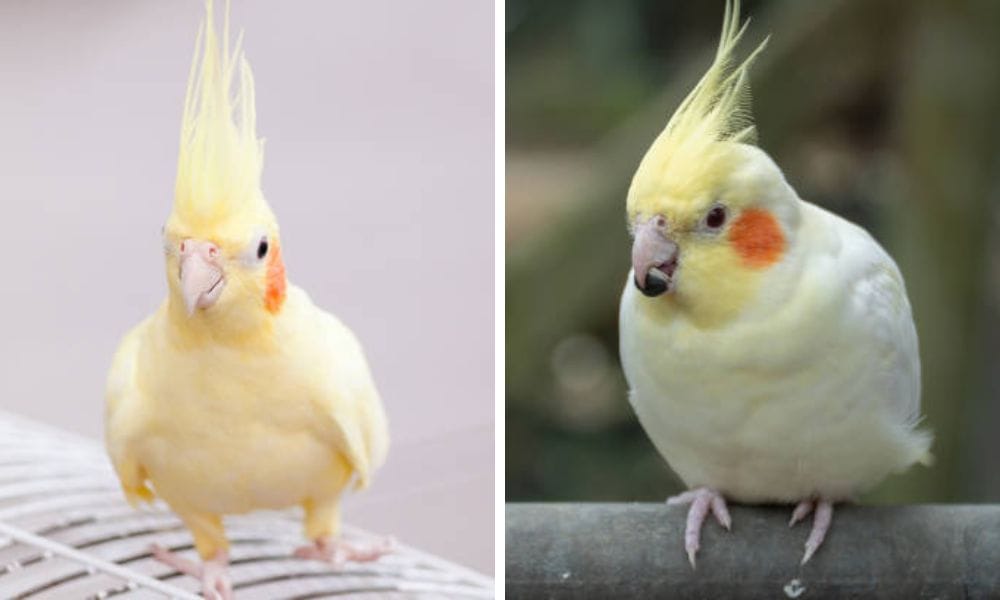
Nest Box Nuances for Your Cockatiel
When it comes to breeding cockatiels, the nest box is an essential element. It's not just about providing a space for egg-laying; it's about creating a safe, comfortable environment where your cockatiel can feel secure. For young birds and breeding females, the nest box represents a haven for raising their babies. It's important to choose a nest box that's the right size—about half the size of a shoebox is typically recommended. This ensures that the cockatiel has enough room to move around without feeling cramped, which can lead to stress and potential health issues.
Breeders and pet owners alike should pay attention to the material of the nest box. Wood is a popular choice, as it provides a natural feel and is easy for the cockatiel to grip. The entrance hole should be large enough for the bird to enter comfortably but not so large that it compromises the feeling of safety. Additionally, the interior of the nest box can be lined with soft materials to provide cushioning for the eggs and comfort for the mother. Proper care and maintenance of the nest box are crucial, as a clean and well-kept environment will help ensure the health of both the eggs and the parent birds.
Molting and Feather Care
Molting is a natural process where birds shed old feathers to make way for new growth. During this time, your lutino cockatiel may appear scruffy and may be more irritable. Provide a warm bath or mist your bird to help with the discomfort. Ensure that your bird's diet is rich in nutrients to support healthy feather growth.
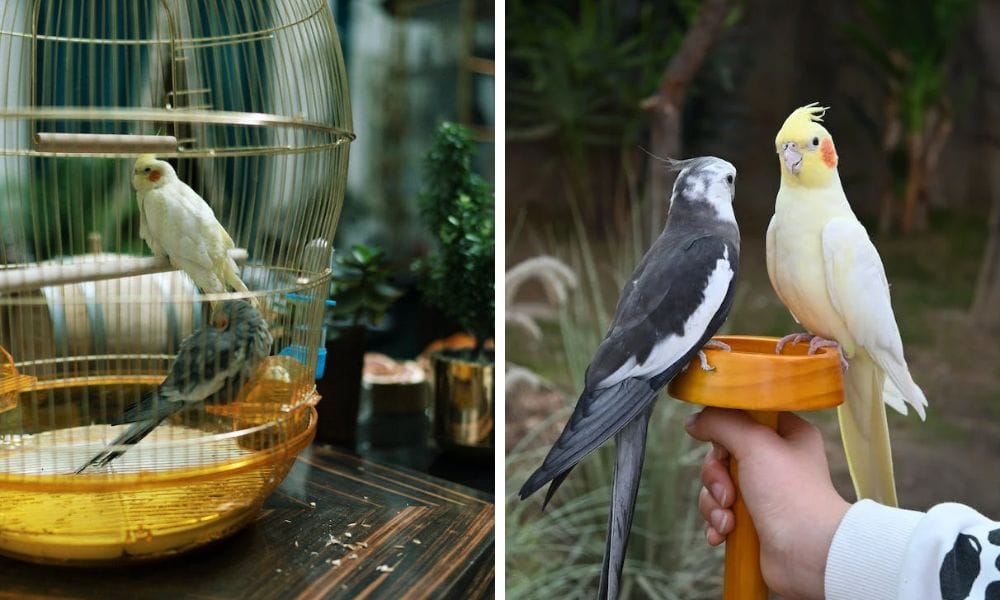
Training and Tricks
Lutino cockatiels can learn a variety of tricks and commands. With diligent training, Lutino Cockatiels can be taught a few words and phrases, with males generally being more talkative than females. Training sessions not only provide mental stimulation but also reinforce the bond between you and your bird. Start with simple tricks like stepping up onto your finger and progress to more complex tasks. Always use positive reinforcement and never punish your bird.
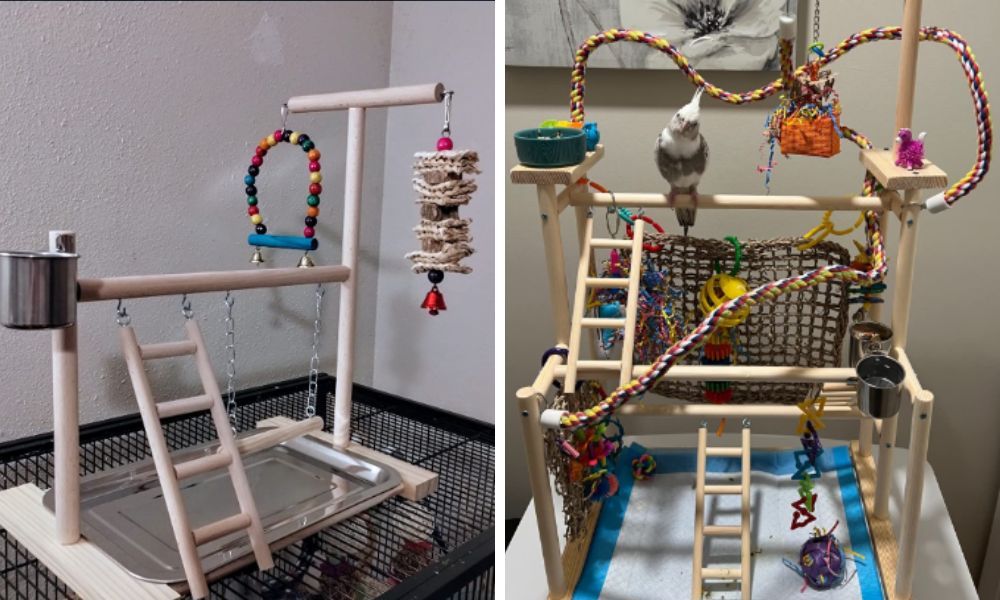
The Importance of a Routine and Proper Cage Size
Establishing a daily routine helps your lutino cockatiel feel secure. Consistent feeding times, play sessions, and periods of rest can help your bird know what to expect each day. A stable routine can reduce stress and contribute to a more content and happy cockatiel.
Handling and Affection
Gentle handling is key to building trust with your lutino cockatiel. Use a low voice and slow movements to avoid startling your bird. Offer your finger as a perch and allow your lutino tiel to come to you. Over time, your bird may enjoy head scratches and cuddles as part of its pampering routine.
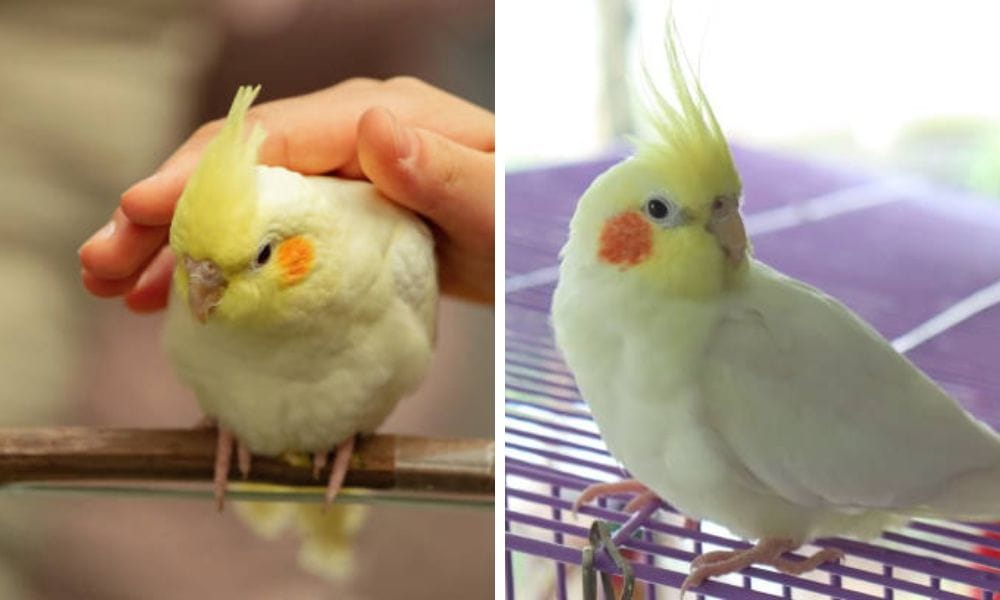
The Sounds of Happiness
Lutino cockatiels are known for their whistles and soft chirps. Encourage vocalizations by talking to your bird and whistling back. Music can also be a source of enjoyment for your lutino tiel. Observe your bird's reactions to different types of music and find out what they enjoy the most.
Preventing Boredom
Boredom can lead to behavioral issues in cockatiels. To prevent this, provide a variety of activities and change the environment occasionally. Introduce new toys, DIY toys, play different games, and allow your lutino cockatiel to explore safe areas outside its cage under supervision.
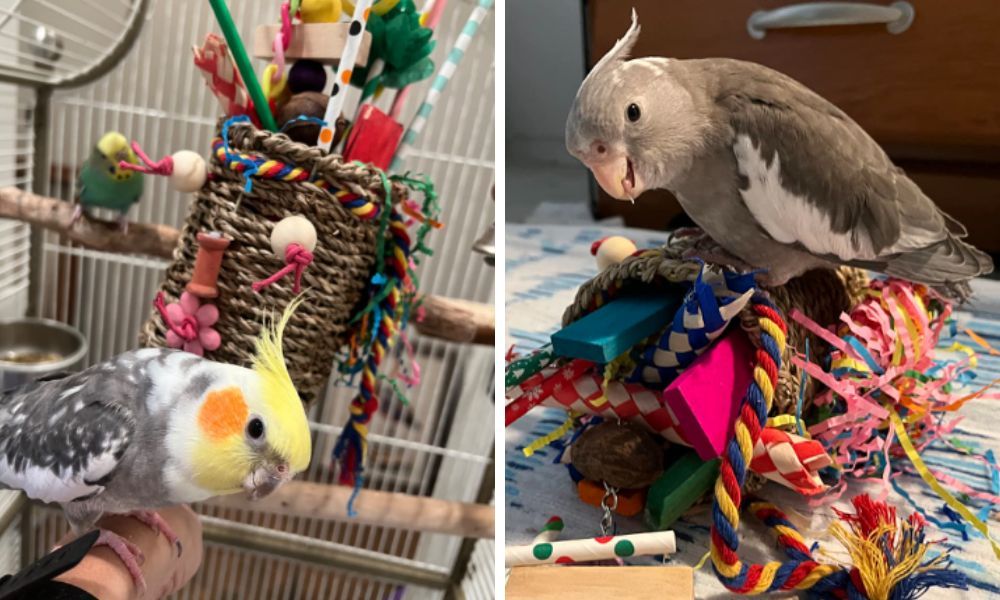
The Right Flock
While lutino cockatiels can enjoy the company of other birds, it's important to choose companions wisely. Introduce new birds gradually and monitor their interactions. Some lutino cockatiels may prefer being the only bird, while others may enjoy being part of a small flock.
Summary
Pampering your lutino cockatiel involves more than just providing food and shelter. It's about creating a loving environment that caters to their physical, emotional, and social needs. By offering a spacious home, a nutritious diet, companionship, entertainment, and regular health care, you'll ensure that your gorgeous lutino cockatiel leads a joyful and pampered life.
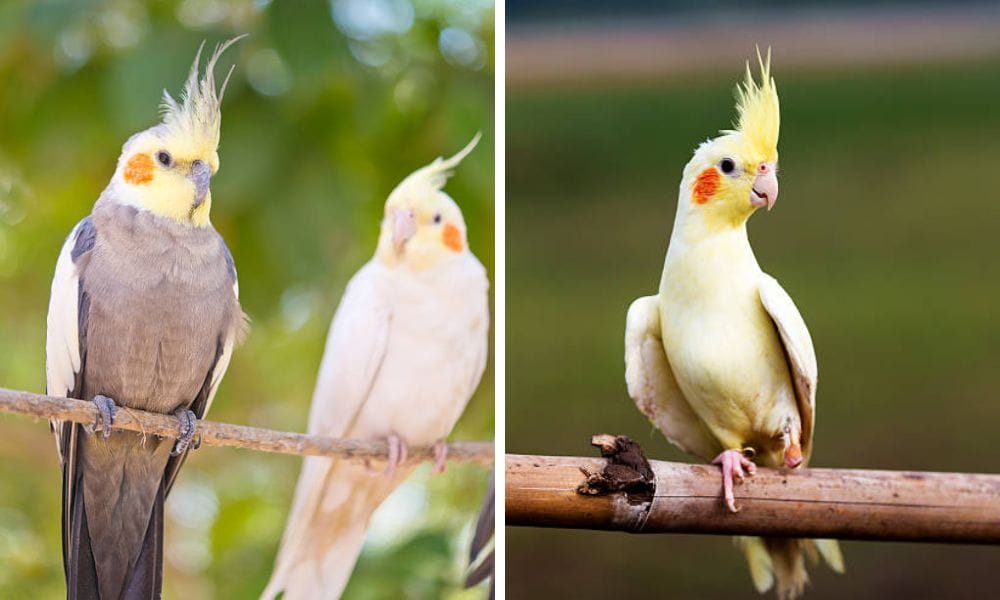
FAQ Section
Q: How can I tell if my lutino cockatiel is male or female? A: Male lutino cockatiels often have brighter yellow coloring and may exhibit more vocal behavior. However, the most accurate way to determine the sex of your lutino cockatiel is through DNA testing or observing breeding behavior.
Q: What are some signs that my lutino cockatiel is happy? A: A happy cockatiel will be active, vocal, and show curiosity about its surroundings. It will also have a good appetite and enjoy interacting with you. Look for signs like relaxed body language, preening, and playful behavior.
Q: How often should I take my lutino cockatiel to the vet? A: It's recommended to take your lutino cockatiel for a wellness check at least once a year. However, if you notice any changes in behavior or appearance, such as a bald patch or signs of illness, schedule a visit to the vet immediately.
You will not regret clicking the link below to see some of the best food you can offer your beloved cockatiel! Your feathered friend is sure to benefit from the balanced nutrition they will receive, while also enjoying the variety in their diet. Healthy and varied meals will help ensure that your cockatiel stays active and vibrant for years to come. Make sure your bird has everything it needs to stay in top shape by clicking the link below for an array of options for a tasty and nutritious meal!

